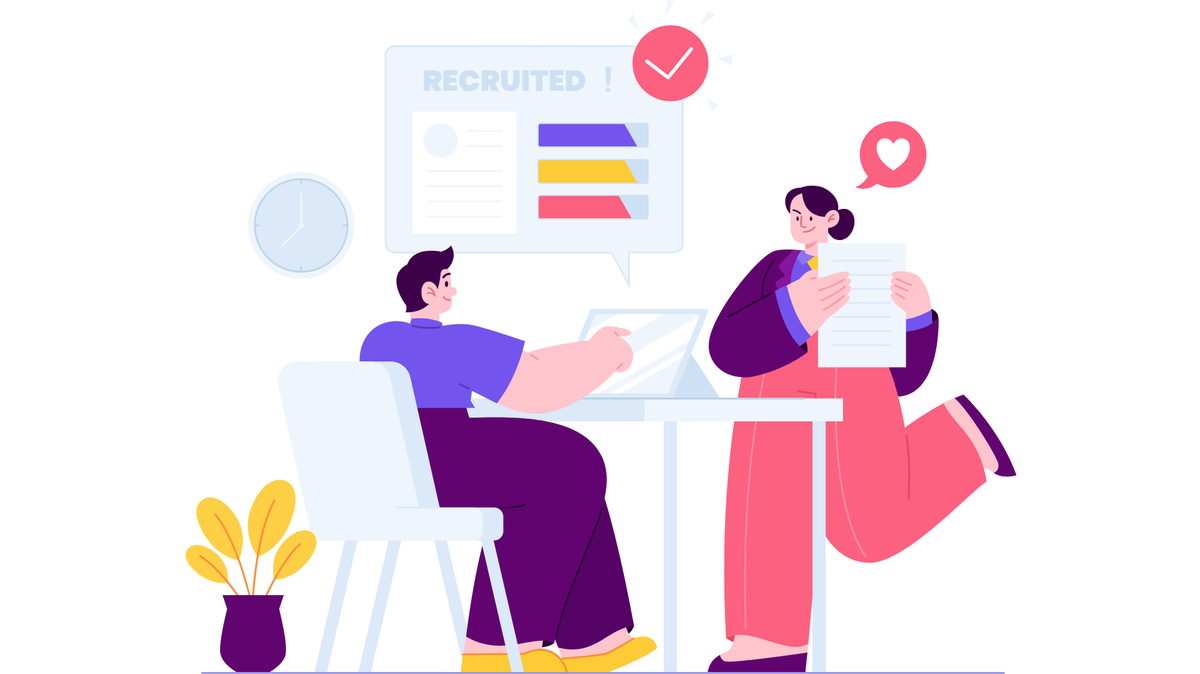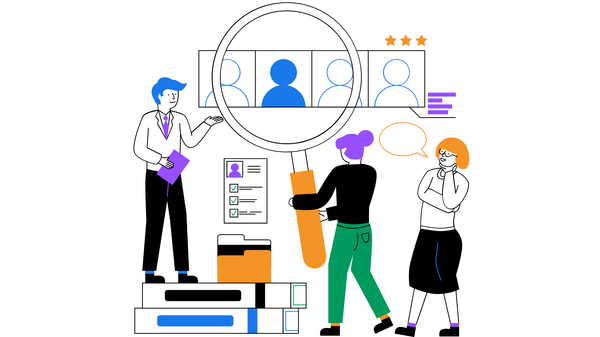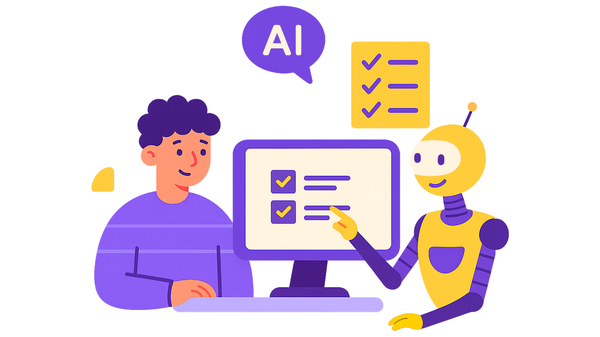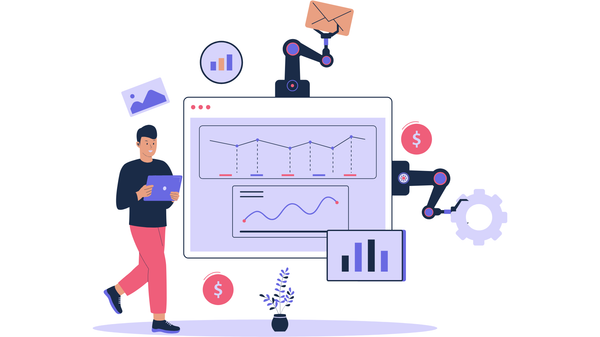How to Build a 24/7 Recruiting Assistant That Works While You Sleep
Learn how to build a 24/7 recruiting assistant that automates sourcing, screening, and scheduling so your hiring process runs while you sleep.

If you have ever ended your day with more tasks than you started with, you are not alone. Modern recruiters are under constant pressure to source, screen, and engage candidates faster — all while delivering a great experience.
The problem is that recruitment rarely stops at 5 p.m. Candidates apply after hours, messages pile up overnight, and scheduling requests flood your inbox by morning. You cannot clone yourself, but you can create something that works for you around the clock.
This is where automation comes in.
In this guide, you will learn how to design and build a 24/7 recruiting assistant — an automated hiring system that runs continuously, handling repetitive tasks, nurturing candidates, and keeping your pipeline active while you sleep. No coding required.
Why You Need a Recruiting Assistant That Never Sleeps
The modern hiring landscape is always on. Job seekers apply outside working hours, often from mobile devices, and expect rapid responses. In fact, 58 per cent of candidates expect a reply within one week — and most lose interest if they hear nothing.
A 24/7 recruiting assistant ensures that:
- Applications are acknowledged instantly
- Candidates are screened automatically
- Interview scheduling happens without delay
- Communication remains consistent and on-brand
Instead of working longer hours, automation lets you work smarter by creating a process that continues in the background.
What a 24/7 Recruiting Assistant Actually Does
A recruiting assistant powered by automation handles the repetitive, predictable tasks that consume most of your day.
It can:
- Distribute job adverts automatically across multiple platforms
- Collect and sort applications
- Screen candidates using pre-set criteria
- Schedule interviews through integrated calendars
- Send updates and feedback emails
- Nurture candidates through personalised communication
Think of it as a digital colleague who handles the admin while you focus on the people.
The Core Components of a 24/7 Recruiting Assistant
Building your assistant involves connecting a few tools that already exist in your workflow. You do not need a dedicated system or IT support — only the right structure.
1. Job Posting Automation
Instead of manually publishing job adverts on different platforms, use automation to distribute them automatically.
Tools to use:
- Recruitee or Workable post across job boards
- Google Docs or Notion for reusable job description templates
- Buffer or Hootsuite to share roles on social media
Automated job posting ensures that every new vacancy reaches your audience instantly, saving hours of repetitive work.
To see how automation speeds up small business recruitment, read Using Automation to Save Time in SME Recruitment.
2. Automated Application Collection
Applications should flow into a single location where they are easy to review. Instead of receiving CVs by email, use an online form or integration that automatically stores submissions.
Tools to use:
- Google Forms, Typeform, or Jotform for candidate applications
- A Workflow Automation software to connect form responses to Google Sheets or your CRM
- Automatic email confirmations to applicants
This creates an organised database that updates in real time — no manual sorting needed.
3. Automated Screening
Screening is where most time is lost, but it is also where automation shines. Use simple filters or AI-assisted tools to identify qualified candidates instantly.
Tools to use:
- ChatGPT-based forms or HireEZ for basic screening logic
- Spreadsheet filters for role-specific keywords
- Scoring systems that rank candidates based on experience and skills
Learn more in automating Candidate Screening.
Pro Tip: Always include human review before shortlisting to maintain fairness. For guidance, see avoid bias when automating resume screening.
4. Automated Interview Scheduling
Once you have shortlisted candidates, scheduling interviews can be automated completely.
Tools to use:
- Calendly, Google Calendar Appointment Schedules, or Microsoft Bookings
- Candidates pick available slots directly
- Automatic reminders sent 24 hours before each interview
This single automation can save recruiters up to five hours per week.
To see a full walkthrough, visit how to automate interview scheduling.
5. Automated Candidate Communication
Communication is where many hiring processes break down. Candidates often wait weeks without updates, which can damage your employer's brand.
Automation can ensure every applicant receives a timely, polite message at each stage.
Tools to use:
- Gmail templates or Outlook Quick Parts for standardised messages
- Mailchimp, HubSpot, or ActiveCampaign for personalised email sequences
- Workflow Automation software to trigger updates when candidate status changes
Use templates for:
- Application received
- Interview invitation
- Post-interview feedback
- Rejection emails
For help creating a professional and empathetic message, see write a polite rejection email with a positive tone.
6. Automated Onboarding
Once you hire the right candidate, your assistant can guide them through onboarding automatically.
Tools to use:
- ClickUp, Asana, or Trello for onboarding task lists
- Google Drive or Dropbox for document sharing
- DocuSign or Adobe Sign for contracts
Create triggers such as:
- “Send welcome email” when candidate accepts the offer
- “Assign onboarding checklist” one day before start date
- “Send company handbook” automatically
Automation ensures your new hires have a seamless experience from day one.
Connecting It All: Building the Workflow
Now that you know the components, here is how to connect them into a single system — your 24/7 recruiting assistant.
- Job advert created in Google Docs → published across LinkedIn, Indeed, and social media.
- Applications collected via Google Forms → stored automatically in Google Sheets.
- Screening automation filters and scores candidates.
- Qualified candidates receive automatic interview booking links.
- Candidates who are not selected receive respectful automated rejections.
- New hires receive onboarding materials and digital contracts.
This sequence runs continuously with minimal manual input. You can monitor performance through your dashboards and step in only when needed.
If you want practical workflow examples, check out 7 Simple Hiring Workflows You Can Automate in One Afternoon.
The Benefits of Building a 24/7 Recruiting Assistant
Implementing automation has far-reaching benefits beyond saving time.
1. Consistent Candidate Experience
Every candidate receives timely communication, ensuring professionalism and trust — even those not hired.
2. Faster Hiring Cycles
Automation cuts down on waiting times between stages. Candidates can apply, schedule, and confirm interviews in one day.
3. Reduced Admin Workload
Recruiters can shift from reactive tasks to proactive strategy. Instead of managing emails, they analyse performance and improve the process.
4. Better Data and Insights
Every interaction is logged automatically, providing clean data for future analysis.
For guidance on which recruitment metrics to monitor, read 5 Recruitment KPIs Every SME Should Monitor Monthly.
5. 24/7 Productivity
Your assistant never sleeps. It keeps your recruitment pipeline active and responsive, even when your office is closed.
Avoiding Common Mistakes
While automation is powerful, it must be implemented thoughtfully. Here are common pitfalls to avoid.
1. Automating Before Simplifying
Do not automate a process that is already confusing. Simplify your hiring steps before adding automation.
2. Forgetting the Human Element
Automation should handle logistics, not relationships. Keep human oversight at decision-making stages.
3. Poor Communication Tone
Automated messages can sound robotic. Review templates regularly to ensure they reflect your brand voice.
4. Ignoring Compliance
Always comply with the UK GDPR when collecting and storing candidate data.
5. Failing to Test Workflows
Test your automations regularly to make sure triggers, emails, and calendar links work correctly.
For compliance and ethical automation guidance, see Can ChatGPT legally be used to make hiring decisions?.
How AI Fits Into Your 24/7 Recruiting Assistant
Artificial intelligence adds an extra layer of intelligence to your assistant.
AI tools can:
- Analyse CVs and predict success likelihood
- Draft job descriptions automatically
- Write personalised emails or candidate summaries
- Provide chat-based candidate interactions
AI can also power chatbots on your careers page that answer FAQs and pre-screen applicants instantly — creating the experience of a digital recruiter.
However, use AI responsibly. Always verify AI-generated decisions for fairness and accuracy.
Measuring Your Assistant’s Performance
Track performance through quantifiable results. Measure:
- Time saved per hire
- Number of applicants processed automatically
- Candidate satisfaction rates
- Reduction in time-to-hire
- Rehire or referral rates
If your automation delivers faster results without compromising quality, it is working effectively.
When You Should Consider Scaling Up
A no-code recruiting assistant works perfectly for small and medium-sized teams. But as your hiring needs grow, you may consider upgrading to a full applicant tracking system.
The good news: your current automation setup makes that transition smoother. You will already have clean workflows, structured data, and defined automation triggers.
To prepare for that future, read The Small Business Guide to Automating Hiring Without an ATS.
Real-World Example: The Five-Minute Hiring Funnel
A fast-growing marketing agency implemented a 24/7 recruiting assistant using Google Forms, Make, and Calendly.
Before automation:
- The hiring cycle took 18 days on average.
- Recruiters spent 12 hours per role on admin.
- Half of the candidates dropped off after the first email.
After automation:
- Time-to-hire dropped to 7 days.
- Recruiters spent less than 2 hours on admin per role.
- Candidate satisfaction rose by 50 per cent.
Automation did not replace recruiters — it gave them time back to focus on people.
How a Recruitment Automation Agency Can Help
While the individual tools are simple, designing a seamless, compliant workflow requires experience.
A specialist recruitment automation agency like Neverdue can help you:
- Audit your current process
- Identify which automations bring the fastest ROI
- Integrate your tools for smooth operation
- Maintain compliance and ethical hiring standards
You gain a tailored, scalable system that saves hours weekly without losing the human touch.
Automation does not replace recruiters — it enhances them.
By building your own 24/7 recruiting assistant, you create a system that works tirelessly in the background: acknowledging applications, screening candidates, and keeping communication flowing even when you are offline.
Start small. Automate one part of your process today. Within weeks, you will have a self-sustaining recruitment engine that operates continuously, helping you attract and hire better talent faster.
If you would like to build your own automated recruiting assistant, book a call with our team. We will help you design a system that fits your goals and works while you sleep.




